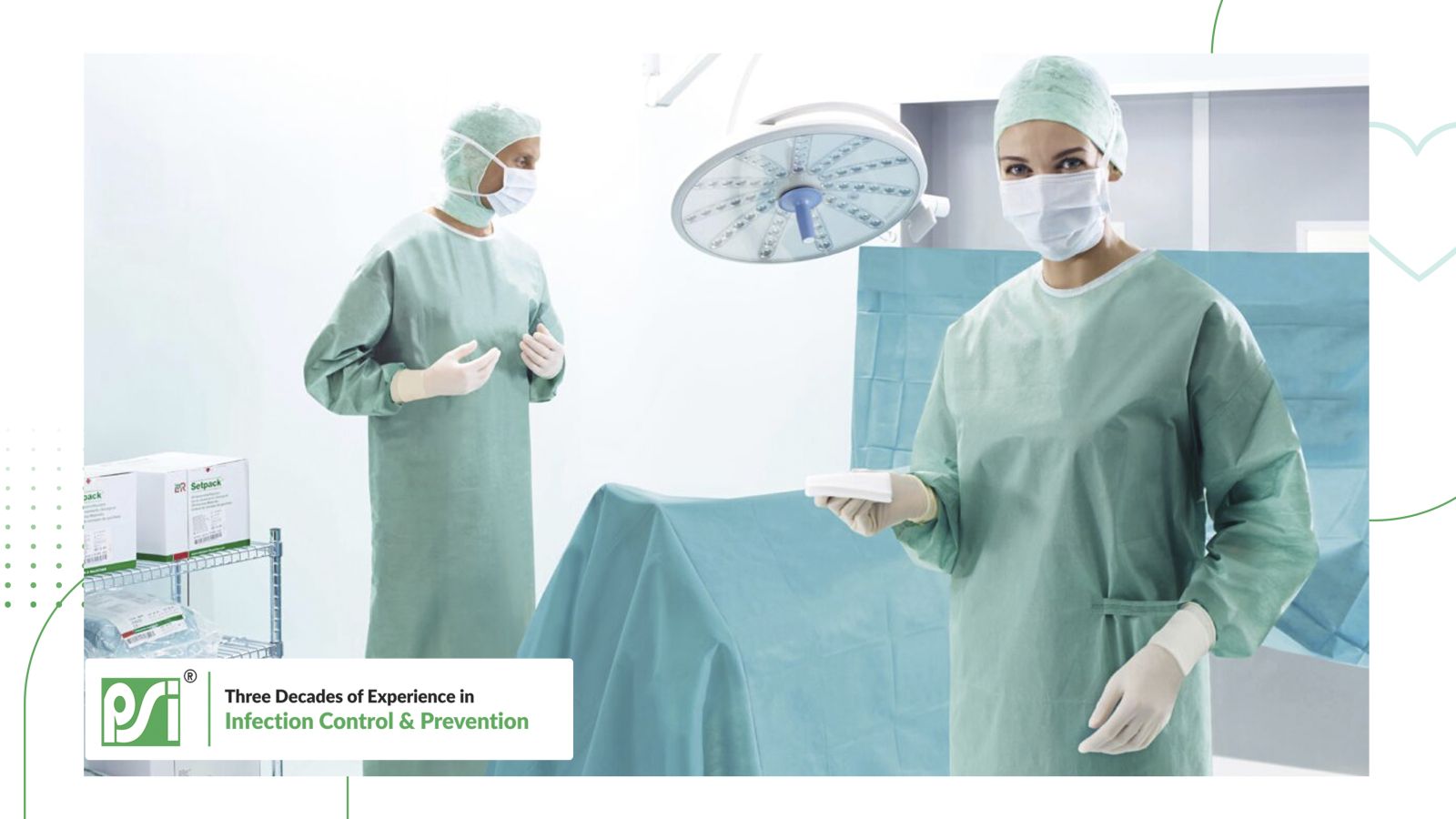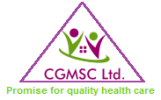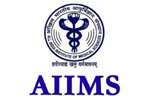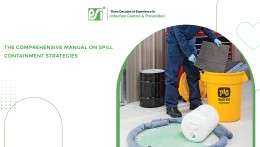One of the best Surgical Disposables company. I am dealing with them for the past 5 years,
their products are world-class. Their approach to trade is professional. All the best wishes to
them.
Disposable Drapes: The Key to Infection Control in Healthcare
- By: Plasti Surge Industries

In healthcare settings, infection control stands as a paramount priority, shaping the foundation of patient safety and healthcare professional well-being. The critical importance of infection control cannot be overstated, especially in environments where the risk of spreading infections is inherent. Preventative measures play a pivotal role in safeguarding both patients and healthcare professionals, forming a frontline defense against the transmission of pathogens. Within this context, the use of Disposable Drapes for Medical Professionals emerges as a key strategy. These drapes act as a protective barrier, significantly reducing the risk of cross-contamination during medical procedures. By embracing disposable drapes, healthcare providers not only enhance infection control protocols but also exemplify a commitment to proactive measures that prioritize the well-being of all individuals within the healthcare ecosystem. It underscores a conscientious approach, aligning with the highest standards of patient care and professional responsibility.
The Significance of Disposable Drapes
 Choosing the right disposable drapes is a pivotal decision in bolstering infection control measures in healthcare. Disposable drapes contribute significantly by acting as a reliable barrier against pathogens during medical procedures, reducing the risk of cross-contamination. Their single-use nature ensures a fresh, sterile surface for each patient, minimizing the potential transmission of infections. In contrast to reusable alternatives, disposable drapes eliminate the challenges associated with proper sterilization and laundering, offering a convenient and efficient solution. The advantages lie in their cost-effectiveness, reduced environmental impact, and the assurance of consistently maintaining a high standard of infection control in medical settings.
Choosing the right disposable drapes is a pivotal decision in bolstering infection control measures in healthcare. Disposable drapes contribute significantly by acting as a reliable barrier against pathogens during medical procedures, reducing the risk of cross-contamination. Their single-use nature ensures a fresh, sterile surface for each patient, minimizing the potential transmission of infections. In contrast to reusable alternatives, disposable drapes eliminate the challenges associated with proper sterilization and laundering, offering a convenient and efficient solution. The advantages lie in their cost-effectiveness, reduced environmental impact, and the assurance of consistently maintaining a high standard of infection control in medical settings.
Reducing Cross-Contamination
|
ASPECT |
DISPOSABLE DRAPES |
REUSABLE DRAPES |
|
Single-Use Design |
Designed for one-time use, minimizing the risk of contamination between patients. |
Repeated use may compromise sterility, potentially contributing to cross-contamination. |
|
Fresh Sterile Surface |
Each procedure utilizes a new, sterile drape, ensuring a clean environment for medical interventions. |
Repeated use may lead to the accumulation of contaminants, increasing the risk of cross-contamination. |
|
Convenience and Efficiency |
Easily disposed of after use, promoting a quick turnaround for subsequent procedures. |
Requires thorough cleaning and sterilization processes, leading to longer turnover times. |
|
Reduced Handling Risks |
Eliminates the need for extensive handling, minimizing the risk of inadvertent contamination during storage or transport. |
Frequent handling during washing and storage increases the likelihood of exposure to contaminants. |
|
Consistent Quality |
Ensures consistent sterility and quality with each new drape, contributing to a standardized infection control approach. |
Quality may degrade over time with reuse, potentially compromising the effectiveness of infection control measures. |
Disposable drapes, with their single-use design and emphasis on maintaining a fresh sterile surface for each procedure, stand out as a superior choice in minimizing the risk of cross-contamination during medical interventions compared to reusable alternatives.
Disposable drapes offer unparalleled hygiene and efficiency in various medical scenarios. In surgical settings, they ensure a pristine and uncontaminated environment, reducing the risk of postoperative infections. Emergency situations, where swift and uncomplicated preparation is crucial, benefit from the convenience of disposable drapes. Additionally, outpatient procedures and clinics can optimize workflow and maintain high hygiene standards by utilizing disposable drapes, showcasing their versatility in enhancing patient care and procedural efficiency.
Cost-Efficiency and Resource Management
The cost-effectiveness of choosing disposable drapes for medical professionals is evident in various aspects. While the upfront per-unit cost of disposable drapes may seem higher than reusable alternatives, the overall financial impact tells a different story. Disposable drapes eliminate the expenses tied to laundering, sterilization, and maintenance associated with reusable options. The reduction in labor costs, detergent expenses, and energy consumption contributes to significant long-term savings for healthcare facilities.
Moreover, opting for disposable drapes aligns with environmental responsibility by diminishing the ecological footprint. The laundering process of reusable drapes demands substantial water and energy consumption, impacting both cost and environmental sustainability. In contrast, disposable drapes, being single-use, reduce the strain on water resources and contribute to energy conservation, making them a cost-effective and environmentally friendly choice for healthcare institutions.
Patient and Healthcare Worker Safety
 Choosing the right disposable drapes plays a pivotal role in ensuring the safety of both patients and healthcare workers. These drapes act as a barrier, minimizing the risk of cross-contamination and infection during medical procedures. By providing a fresh and sterile surface for each patient, disposable drapes contribute to a safer healthcare environment. Their single-use design underscores a commitment to infection control, reducing the potential transmission of pathogens and prioritizing the well-being of both patients and the dedicated professionals delivering care.
Choosing the right disposable drapes plays a pivotal role in ensuring the safety of both patients and healthcare workers. These drapes act as a barrier, minimizing the risk of cross-contamination and infection during medical procedures. By providing a fresh and sterile surface for each patient, disposable drapes contribute to a safer healthcare environment. Their single-use design underscores a commitment to infection control, reducing the potential transmission of pathogens and prioritizing the well-being of both patients and the dedicated professionals delivering care.
Disposable drapes play a pivotal role in maintaining a sterile environment, effectively minimizing the spread of infections. Designed for single use, these drapes ensure that each medical procedure begins with a fresh, uncontaminated surface. This emphasis on hygiene significantly reduces the risk of cross-contamination, contributing to infection control measures. The efficiency of disposable drapes in promoting a pristine environment enhances patient safety, underscores healthcare professionals' commitment to hygiene, and supports the overall goal of providing a safe and secure healthcare setting.
Compliance with Infection Control Standards
Choosing the right disposable drapes for medical professionals aligns seamlessly with infection control standards and guidelines. The single-use design of these drapes ensures adherence to stringent hygiene protocols, reducing the risk of cross-contamination. Maintaining a high level of compliance in healthcare settings is crucial for upholding patient safety and the well-being of healthcare professionals. Disposable drapes contribute significantly to this compliance, providing a consistent and reliable infection control measure. By prioritizing the use of disposable drapes, healthcare facilities demonstrate a commitment to stringent standards, fostering a culture of safety, and reinforcing the importance of infection prevention in medical practices.
Versatility and Convenience
Versatility of Disposable Drapes:
- Suitable for a wide range of medical procedures, including surgeries, examinations, and outpatient interventions.
- Available in various sizes and configurations to accommodate diverse medical requirements.
- Designed to provide a sterile barrier, ensuring hygiene across different healthcare applications.
Convenience of Using Disposable Drapes:
- Easily stored in compact packaging, optimizing storage space in healthcare facilities.
- Simple and quick to handle, facilitating efficient preparation before medical procedures.
- Convenient disposal after use eliminates the need for complex cleaning and sterilization processes.
- Streamlines workflow by offering a hassle-free solution for medical professionals.
Technological Advancements in Disposable Drapes
Recent technological innovations in disposable drape design have enhanced their functionality and efficacy for medical professionals. Some innovations include advanced materials with improved barrier properties, ensuring a higher level of protection. Integrated features such as adhesive strips or securement mechanisms promote better draping during procedures. Additionally, innovations in eco-friendly materials contribute to sustainability. These advancements underscore the commitment to continuously improve infection control measures and enhance the overall experience for both medical professionals and patients in healthcare settings.
Choosing the right disposable drapes with advanced features significantly enhances their effectiveness in infection control. Innovative designs incorporate materials with superior barrier properties, ensuring an optimal sterile environment. Features like adhesive strips and securement mechanisms contribute to secure draping during medical procedures, reducing the risk of contamination. Additionally, selecting drapes with anti-microbial properties adds an extra layer of protection. These features collectively reinforce infection control measures, making the choice of disposable drapes a key factor in maintaining a safe and hygienic healthcare environment.
Environmental Impact
While disposable drapes offer unparalleled hygiene and efficiency in healthcare settings, concerns about their environmental impact are valid. Recognizing these concerns, the healthcare industry is increasingly exploring eco-friendly options and disposal methods to mitigate environmental effects.
To address environmental impact, manufacturers are developing disposable drapes made from biodegradable or recyclable materials. These eco-friendly alternatives aim to reduce the overall carbon footprint associated with medical waste. Additionally, advancements in waste management technologies are facilitating the recycling of certain disposable medical items, contributing to sustainability efforts.
Implementing responsible disposal methods is crucial in mitigating environmental effects. Healthcare facilities are encouraged to adopt waste management practices that prioritize recycling and waste-to-energy solutions. Proper segregation of medical waste ensures that disposable drapes and other materials are directed to environmentally friendly disposal methods.
Furthermore, some disposable drapes are designed to be more environmentally conscious throughout their life cycle. From the selection of materials to manufacturing processes, these drapes aim to minimize environmental impact. Healthcare professionals can contribute by staying informed about and opting for these eco-friendly options, striking a balance between maintaining stringent hygiene standards and reducing the ecological footprint in medical practices. This dual commitment to hygiene and environmental sustainability represents a conscientious approach toward a more environmentally friendly healthcare industry.
Best Practices for Using Disposable Drapes
Guidelines and Best Practices for Using Disposable Drapes:
- Ensure Proper Sterilization: Confirm that disposable drapes are sterile and undamaged before use.
- Select Appropriate Size: Choose drapes that adequately cover the procedural area, maintaining a sterile field.
- Secure Drapes Adequately: Use adhesive strips or securement mechanisms to prevent unintentional displacement during procedures.
- Dispose After Single Use: Adhere to the single-use design, avoiding reuse to maintain optimal hygiene.
- Educate Staff: Provide training on the proper use and disposal of disposable drapes to all healthcare professionals involved.
Proper Disposal Methods:
- Segregate Medical Waste: Clearly segregate disposable drapes as medical waste for proper disposal.
- Follow Local Regulations: Adhere to local regulations governing the disposal of medical waste.
- Explore Recycling Options: Check if recycling options are available for specific eco-friendly disposable drapes.
- Refer to Manufacturer Recommendations: Follow the disposal guidelines provided by the manufacturer for each type of disposable drape.
- Raise Awareness: Encourage awareness among healthcare professionals regarding the importance of responsible disposal practices.
Conclusion and Call-to-Action
Infection control is paramount in healthcare, and choosing the right disposable drapes for medical professionals plays a pivotal role in maintaining hygiene and efficiency. These drapes act as a crucial barrier, minimizing the risk of cross-contamination during medical procedures. By prioritizing the use of disposable drapes and adhering to best practices, healthcare professionals ensure a sterile environment, reducing the spread of infections. The single-use design of these drapes, exemplified by https://www.psidispo.com/, guarantees a fresh and uncontaminated surface for each patient, contributing to a safer healthcare environment. It is imperative for healthcare professionals to recognize the pivotal role disposable drapes play in infection control, embracing them as an essential component of stringent hygiene standards and demonstrating a commitment to patient and professional well-being.
One of the best companies to partner with. Very responsive and best product quality.
Good experience and corporation for many years. Timely services are provided.
We have been associated with PSI since more than 20 years now. They have superior products, prompt service & courteous people. Using PSI’s products in turn makes our customer happy and helps us to do more business. Overall truly delighted with their customer service.














_iCEz.jpeg)
 +91-7798800781
+91-7798800781

4xwz.jpg)




